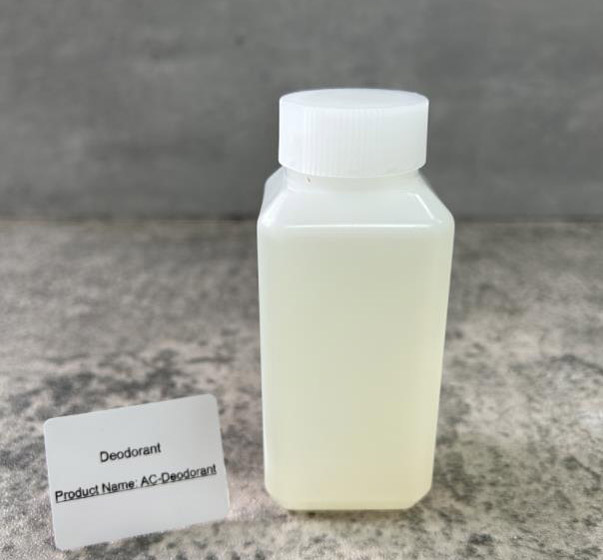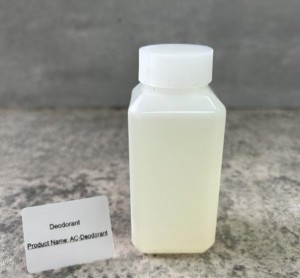Deodorant AC-Deodorant
Product Detail:
In the emission standard for odor pollutants (GB14554-93), 9 indicators for odor evaluation are listed, namely ammonia, trimethylamine, hydrogen sulfide, methyl mercaptan, methyl sulfide, dimethyl disulfide, carbon disulfide, styrene, and odor concentration. According to relevant research results, the concentrations of ammonia (NH3) and hydrogen sulfide (H2S) are often used as representative indicators for odor conditions.At present, the main deodorization technologies at home and abroad include activated carbon adsorption, thermal oxidation, oxygen ion group deodorization, chemical washing, biological filtration, plant liquid deodorization, and high-energy ion deodorization technologies.AC-Deodorant takes plant liquid deodorization method which can effectively and quickly treat foul smelling gas molecules such as ammonia, organic amines, sulfur dioxide, hydrogen sulfide, methyl mercaptan, and other volatile organic compounds (VOCs) in foul smelling environments.
Features:
Adopting plant extraction process, non-toxic and non irritating, with high safety.
Can effectively and quickly handle various odor sources in foul smelling environments.
Easy to use, simple to prepare, suitable for industrial and daily home odor removal.
Application :
AC-Deodorant is applicable for foul smelling places such as sewage treatment plants, industrial wastewater treatment plants, food processing plants, breeding farms, garbage landfills, garbage transfer stations, organic composting yards, etc.
Parameters:
|
Product Name |
Testing items |
Testing results |
|
|
AC-Deodorant |
Safety |
Oral testing |
Non-toxic |
|
Skin irritation test |
No irritation |
||
|
Inhalation test |
Non-toxic |
||
|
Removal rate |
H2S |
92.5% |
|
|
Ammonia |
92.1% |
||
|
Staphylococcus aureus |
99.99% |
||
|
Metal corrosiveness |
Carbon steel, copper, aluminum, stainless steel |
Basically non corrosive |
|
|
Heavy metal content |
Arsenic, lead, mercury, cadmium |
Not detected |
|



